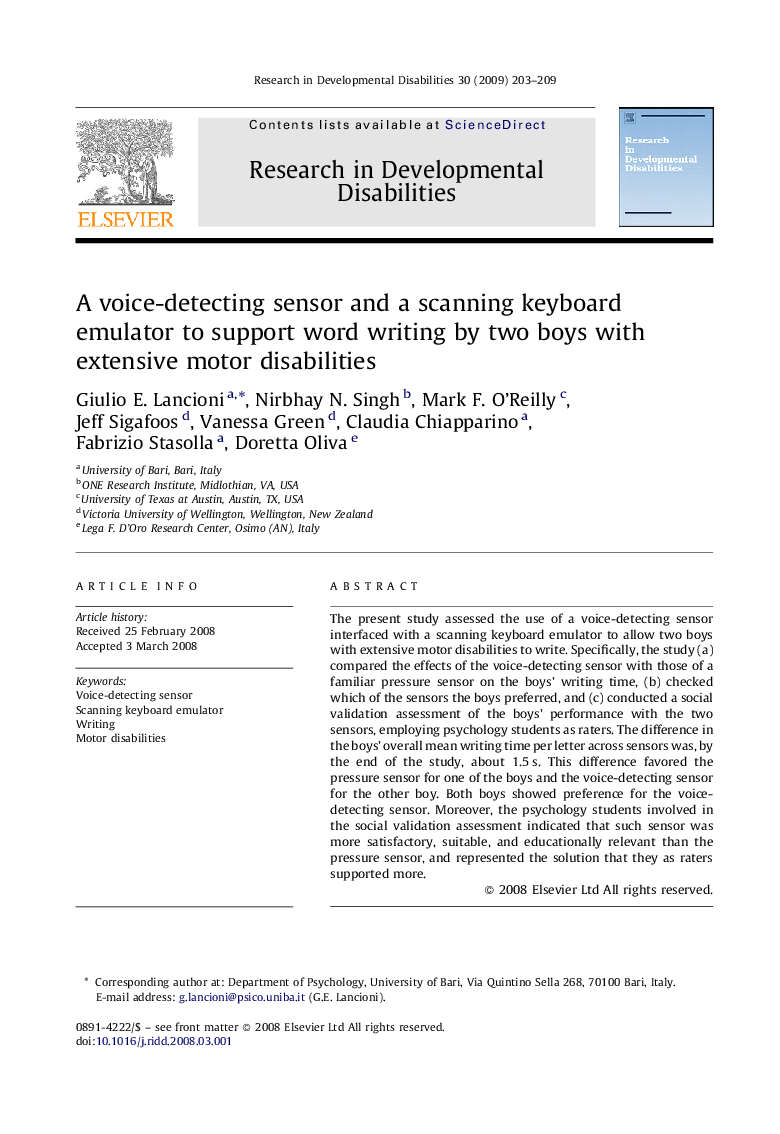| Article ID | Journal | Published Year | Pages | File Type |
|---|---|---|---|---|
| 372104 | Research in Developmental Disabilities | 2009 | 7 Pages |
The present study assessed the use of a voice-detecting sensor interfaced with a scanning keyboard emulator to allow two boys with extensive motor disabilities to write. Specifically, the study (a) compared the effects of the voice-detecting sensor with those of a familiar pressure sensor on the boys’ writing time, (b) checked which of the sensors the boys preferred, and (c) conducted a social validation assessment of the boys’ performance with the two sensors, employing psychology students as raters. The difference in the boys’ overall mean writing time per letter across sensors was, by the end of the study, about 1.5 s. This difference favored the pressure sensor for one of the boys and the voice-detecting sensor for the other boy. Both boys showed preference for the voice-detecting sensor. Moreover, the psychology students involved in the social validation assessment indicated that such sensor was more satisfactory, suitable, and educationally relevant than the pressure sensor, and represented the solution that they as raters supported more.
